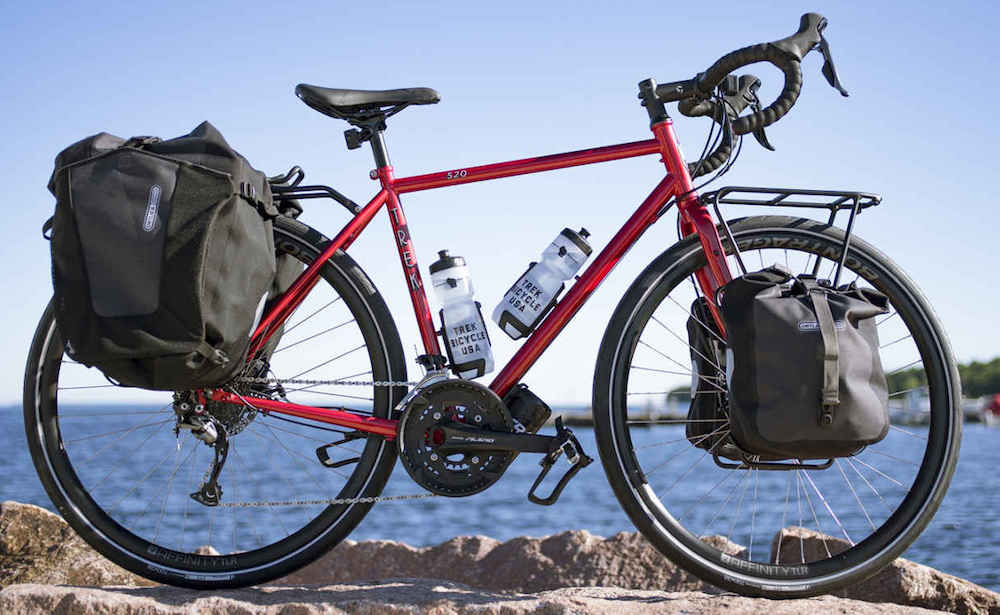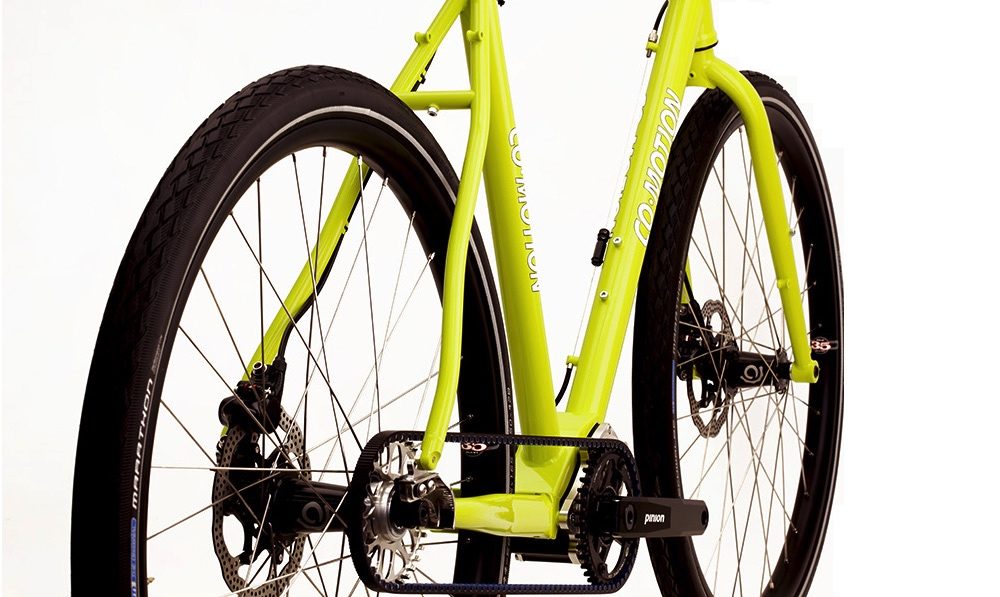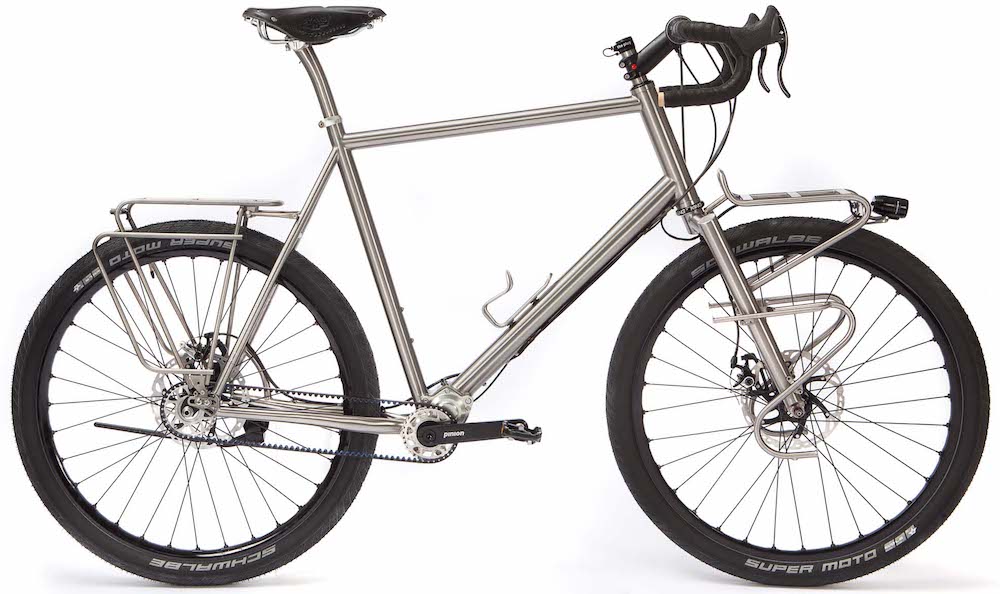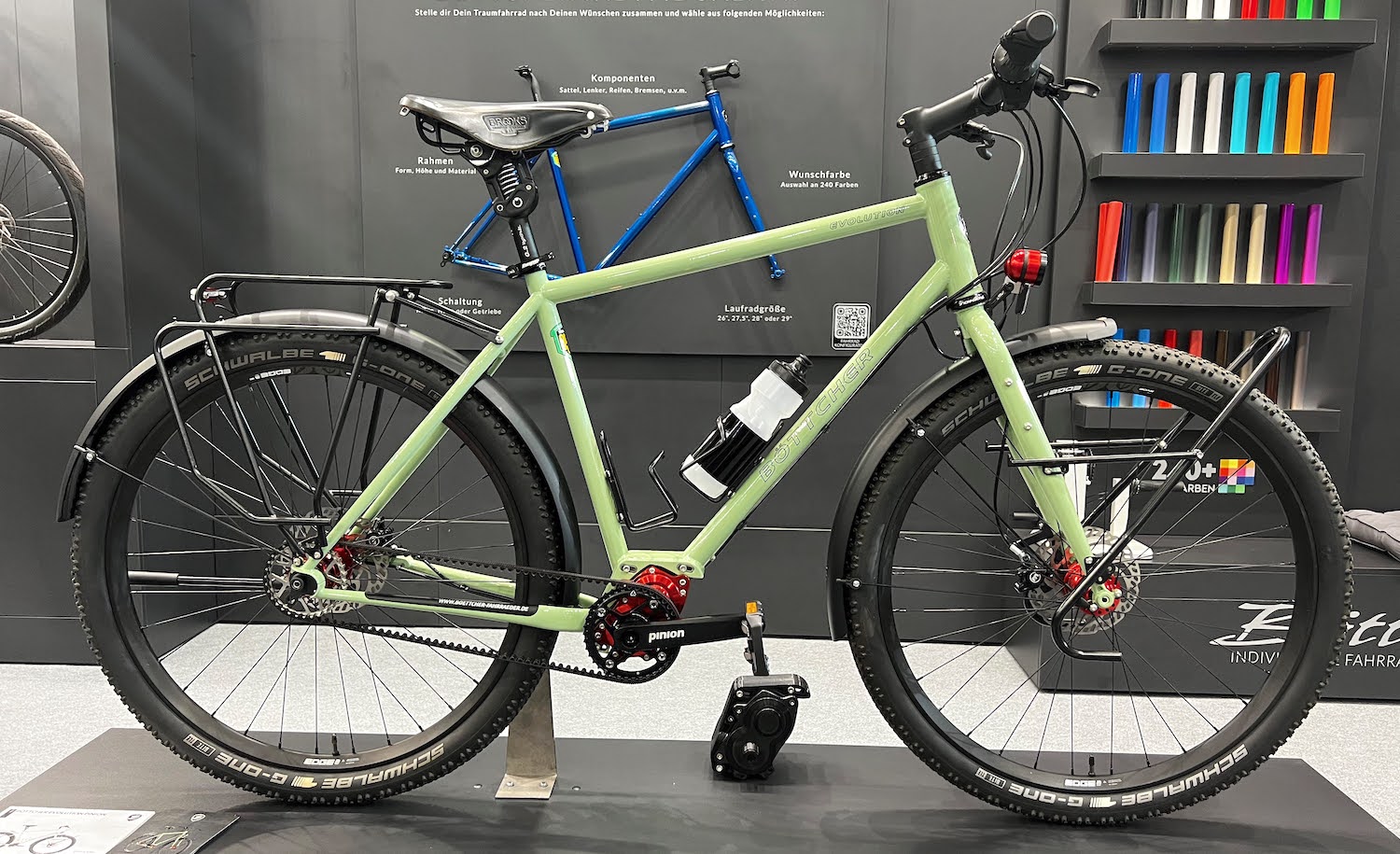Table of Contents
Over my years of bike travel, lateral frame stiffness is a feature I’ve come to really appreciate. It’s not by any means essential that a frame is stiff, but it goes a long way when it comes to the handling, stability and general feel of your bike.
In this article, I’ll be discussing when frame stiffness matters and when it doesn’t. I’ll teach you how to identify a stiff touring bike without even riding it. We’ll also be investigating the relationship between frame stiffness and rider comfort, frame size, belt drivetrains and construction materials.
This article was originally published in December 2018 but has been updated in February 2020.
Why Stiffer Is Better When It Comes To Bike Travel

The majority of touring bikes support a front and rear load, and your frame is the medium which needs to resist the twisting forces between these two points.
Stiffer touring frames are better for the following reasons:
Extra Stability
At certain speeds, a touring frame with a front and rear load can wobble about a bit. While the degree of frame stiffness isn’t the cause of this oscillation (it’s probably an unbalanced front load or slightly out-of-round front wheel), stiffer frames do have a greater ability to resist it. Frame stiffness is even more necessary for drop bar touring bikes as you have less steering leverage to counteract this wobble, should it occur.
Unbalanced Front Loads
It’s not always easy to perfectly balance your front load. I organise my bags based on use, so on one side, I have kitchen gear and on the other, I have camping gear. My kitchen gear works out to be ever so slightly heavier, but by using a super stiff touring frame, I’ve noticed that oscillations are far harder to induce, even with an uneven load. In short, a stiffer frame affords you a bit more flexibility with how you load the front of your bike.
Confidence Inspiring
The torsional rigidity of a stiff frame is undoubtedly more confidence-inspiring to ride. I feel like I have more control over my loaded bike when there is less noticeable flex coming from the top tube and down tube.
Frame Materials And Stiffness

Here’s the good news: you can build a super-stiff touring bike using any frame material. Yep, a good touring frame can be constructed with aluminium, steel, titanium or carbon – it all comes down to the engineering and design of the frame.
A titanium frame that is equal in strength to a steel frame is about half the weight and half the stiffness. To increase the frame stiffness to an adequate amount, titanium manufacturers use larger diameter tubing. This results in a frame that is strong and stiff, yet often lighter (and more expensive) than steel.
An aluminium frame is about a third as stiff, a third of the weight and half as strong as a steel frame with the same tubing specifications. You’ll notice that like titanium frames, aluminium frames also require large tubing diameters (but with far thicker walls) in order to maintain adequate strength and stiffness.
To read more about frame materials and bike travel, head through to my in-depth article HERE.
How To Tell If A Bike Frame Is Stiff

This isn’t a precise science, but in general – stiffer frames use tubes of larger diameters with a thicker gauge (wall thickness). The frame size, tube butting, ovalization and quality of materials will also contribute to the overall stiffness, but this is much harder to determine without some very specific frame construction information, which is rarely provided by bike manufacturers.
While ultra-light, ultra-thin, large-diameter tubing does exist, it is highly unlikely that a frame engineer would use it for a touring bike frame. This type of tubing is reserved specifically for lightweight road bikes. An example tube set is Columbus Spirit OS (steel) which is just 0.4mm in the middle of the tube.
Oversized head tubes are another indication of a potentially stiff frame (look out for an internal upper headset assembly). Frame builders have an easier time connecting larger diameter tubes together with the increased surface area of an oversized head tube.
Here’s a guide to finding the stiffest touring frames (if you can’t test a frame loaded with gear):
Steel
– Look for a down tube that’s 34.9mm or larger (eg. 38.1mm, 42mm or 44mm)
– Look for a top tube that’s 31.7mm or larger (eg. 34.9mm)
– Double or triple butted frame tubing
Titanium
– Look for a down tube that’s 41.5mm or larger (eg. 48mm)
– Look for a top tube that’s 34.9mm or larger (eg. 37.3mm or 38.1mm)
– Double or triple butted frame tubing
Aluminium
– Look for a down tube that’s 44mm or larger (eg. 48mm)
– Look for a top tube that’s 38mm or larger (eg. 44mm)
– Double or triple butted frame tubing
Bike Size And Frame Stiffness

If you’re a smaller rider, you’ll find less of a difference in frame stiffness between touring bikes. That’s because smaller frames are inherently stiffer thanks to their shorter tube lengths. For extra-small or small (44-52cm) bikes, frame tubing that is a diameter size down will likely be adequate.
Conversely, if you’re tall like me, hunt for frames with the largest possible tubing as you’ll be able to notice greater differences in stiffness. Tall riders with heavier loads may even require a marathon tube that reinforces the bike with extra metal connecting the head tube to the seat stays. That said, marathon frame designs are typically not necessary these days as metal tubing is available in larger diameters than ever before.
When Frame Stiffness Matters Most

Now that I’ve jammed lots of stiffness knowledge between your ears, here’s when it matters most:
If you have a front and rear touring load
The typical touring load distributes weight across the whole bike. The heavier the load, the more stiffness the frame requires to handle the forces travelling through it. For example, I carry approximately 10kg up front and 15kg on the rear, and with this kind of load, the extra stiffness of an oversized steel Co-Motion touring frame is very noticeable when compared to a steel Surly Long Haul Trucker.
If you use a belt drivetrain
Belt drive bicycle frames require a particularly stiff rear triangle so that a belt does not jump off the rear cog. Gates and Rohloff actually have a minimum stiffness standard for this if you plan to use their products. Other than keeping the belt on, stiffer rear triangles actually allow you to run lower belt tensions – which result in a reduced drivetrain resistance from your belt drivetrain. You can read more about belt drive efficiency HERE.
When Frame Stiffness Doesn’t Really Matter
Light Front / Heavy Rear Loads (eg. 2X Rear Panniers + Handlebar Bag)
If you’re carrying a load under 5kg/11lb at the front of the bike, you’ll find that you won’t notice any stiffness difference between touring frames.
Heavy Front / Light Rear Loads (eg. 2x Front Panniers + Frame Bag + Bikepacking Seat Pack)
If you’re using a heavy front load with a bikepacking seat pack (or a dry bag mounted to a rear rack), you probably won’t be able to discern between frames of varying stiffnesses.
Light Loads
If you’re packing light front and rear (~5kg/11lb per end) frame stiffness likely won’t be a concern for you.
What About Comfort?

It is often assumed that a stiff frame isn’t very comfortable to ride. But even if this was the case, let’s put bike comfort into perspective.
Most bike frames require upwards of 500N of force to flex one vertical millimetre. This translates to about a millimetre of flex when you apply your body weight to a frame. In comparison, a carbon seatpost like the Ergon CF3 Pro requires just 69N of force to travel a millimetre, which is a fraction of the force required. That means the CF3 Pro can flex around 10mm vertically when you’re simply sitting on the saddle!
But these two things aren’t even your bike’s first line of suspension – that’s the tyres. By applying as little as 10N to a wide tyre, it will easily deform a millimetre or more. Given the low amounts of force required to achieve vertical compliance with a seatpost or wide set of tyres, you’d be hard-pressed to notice the difference in comfort between frames of any stiffness.
Read more about why seatposts are overlooked yet critical for comfort HERE.
Summary
Frame stiffness optimises the stability of a loaded touring bike. With just a few hundred grams of extra frame material, you’ll have a bike that rides nice and stable, as well as being more confidence-inspiring to tour on. And with a good seatpost and wide tyres, your stiff touring bike will be just as comfortable as anything else.
You can determine the stiffness of most touring frames by measuring the diameters of the frame tubing. While this isn’t an exact science, the stiffest touring frames on the market always employ the largest diameter tubes.
For light bikepacking setups, or heavy front or rear loads, frame stiffness is a less important factor.
Find Out Whether Steel, Aluminium or Titanium Is The Best For Bike Travel HERE





